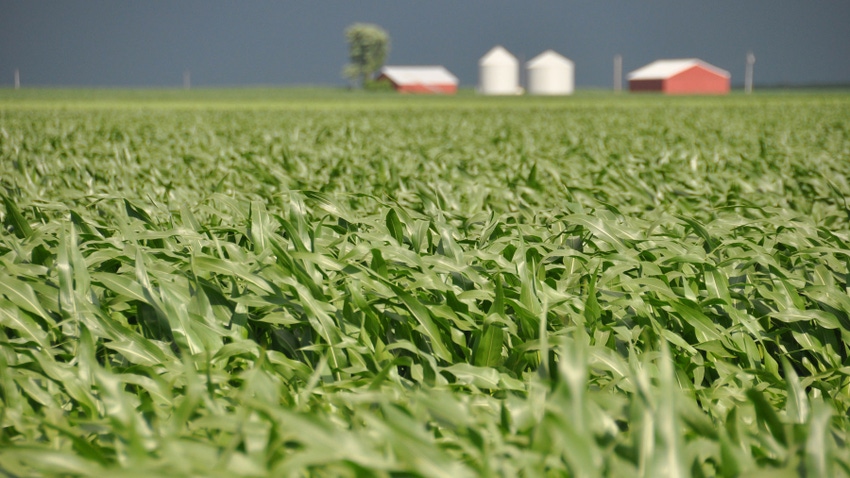July 14, 2023

A new 57-page report from the USDA Economic Research Service takes a deep look at agricultural consolidation in seed, meatpacking and retail companies for the past 40 years. A few statistics from its analysis follow:
Seed. The major driver of consolidation of seed companies was the push to commercialize ag biotechnology and protect intellectual property rights. This resulted in more private research and development investment in crop varieties and greater productivity on the farm. Also, it was found that:
From 2018 to 2020, two seed companies accounted for 72% of planted corn acres and 66% of planted soybean acres across the U.S.
From 1990 to 2020, farmers paid 270% more for seed and 463% more for traited seed, which was substantially more than commodity output prices.
Meatpacking. The ERS report listed these statistics for U.S. meatpackers:
In 2019, the four largest meatpackers accounted for 85% of steer and heifer slaughter, and 67% of hog slaughter.
From 1980 to 2019, meatpacker consolidation in the hog industry nearly doubled. During the same period, concentration in the beef industry rose from 36% to 85%.
Retail. The ERS report listed these statistics for retail grocers in the United States:
In most metro areas, the majority of supermarket sales came from five or six store chains.
The number of supercenter grocers expanded from 705 in 1996 to 2,659 in 2006. Walmart is the largest food retailer in the U.S.
The report said while concentration can work against competition, the relationship between concentration and market power “is not tight.” High concentration can often result from factors like innovations or the realization of scale economies that improve productivity and reduce costs and prices. See the report at USDA.
Go to grazing school
Want to know more about regenerative grazing? There’s a class for that.
The Illinois Grazing Lands Coalition will host two regenerative grazing schools, Sept. 8-9 in Bluford and Sept. 15-16 in Dundee. The schools will offer both classroom and in-field instruction on basics, soil fertility and health, water and fencing systems, multispecies grazing, and more.
“The benefits of regenerative grazing go beyond improving soil health, water quality and biodiversity, says Christian Lovell, coalition coordinator. “The practice can also have a very positive economic impact on a producer’s bottom line through increased animal performance and lower feed costs.”
Register by Aug. 25. Cost is $50 per person; space is limited. Email Lovell at [email protected] for more information.
Big honor for Big O
Orion Samuelson is getting the star treatment at the McHenry County Fair, as the fair renames its meeting hall in his honor. The fair in Woodstock, Ill., will hold a ceremony at 5 p.m. Aug. 2
Congrats to the next ag leaders
The Illinois Ag Leadership Foundation has selected its Class of 2025. This will be the 21st class in the organization’s history. Here’s a look at the newest class:
Joshua Allen, Sherman
Jessica Biernacki, Tinley Park
Jean Brokish, Mahomet
Jill Carlson, Geneseo
Angelica Carmen, Lockport
Angi Carter, DeWitt
Brett Dienst, Maple Park
Lauren Doeling, West Salem
Heather Dollinger, Mazon
Timothy Hartman, Fairbury
Buck Hill, Grand Ridge
Matthew Hulsizer, Galesburg
Brock Hunt, Chicago
Kristin Iverson, Charleston
Brian Koster, Bloomington
David Kubik, Willowbrook
Macy Marek, Quincy
Cody Melle, Deerfield
Amanda Montgomery, Kirkland
Ethan Plote, Leland
Nicole Postin, Alexis
Bryan Rader, Yorkville
Liz Rupel, Springfield
Brad Suhling, Edwardsville
Jossua Torres, Lake Villa
Taylor Zimmer, Delevan
USDA announces discrimination assistance
USDA is now offering financial assistance for farmers, ranchers and landowners who have experienced discrimination in USDA farm lending programs prior to January 2021. You can find more online or submit an application through your local FSA office. The application period is open through Oct. 31, and payments will be sent in early 2024. You do not need an attorney for this application, but you can retain one.
You May Also Like




